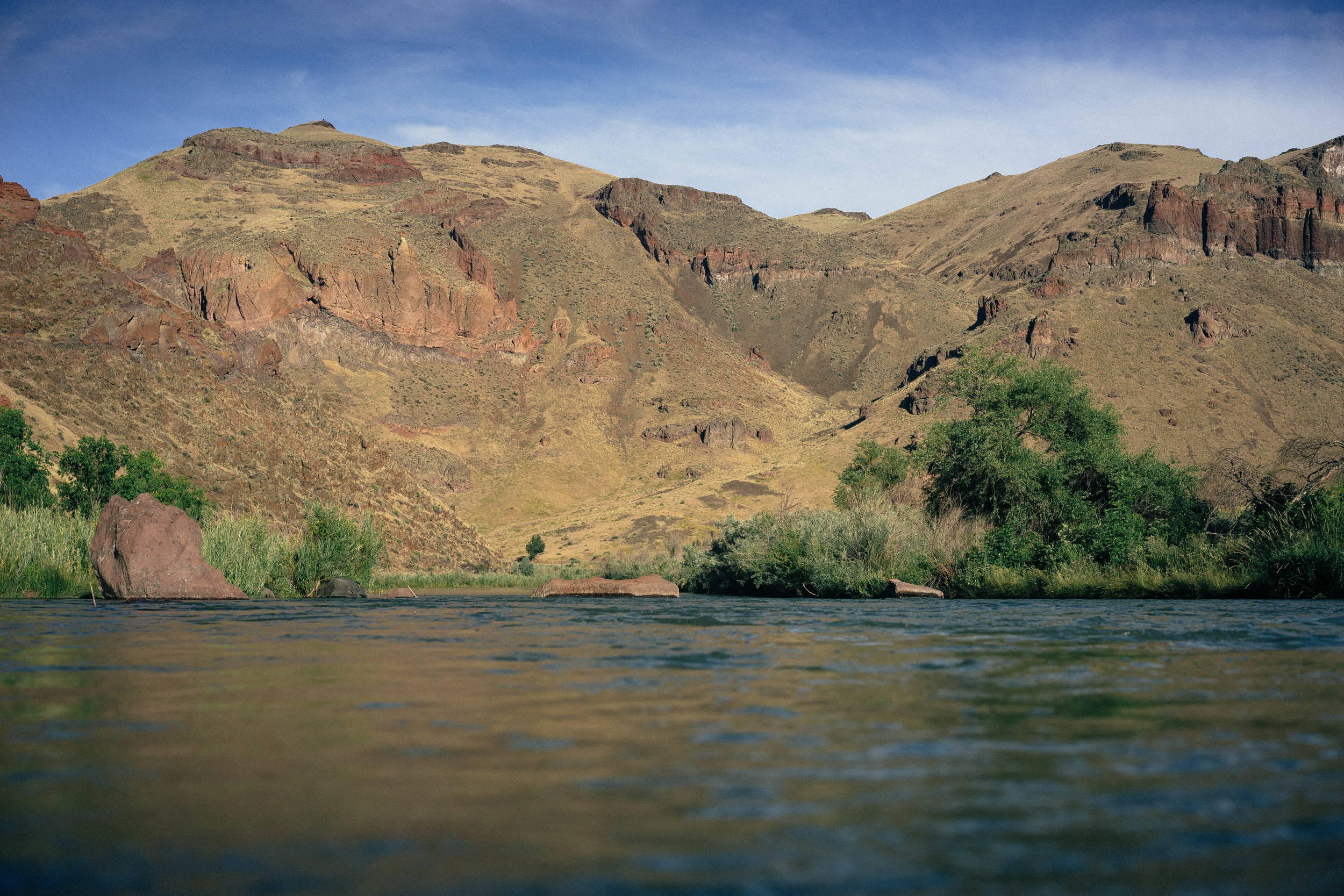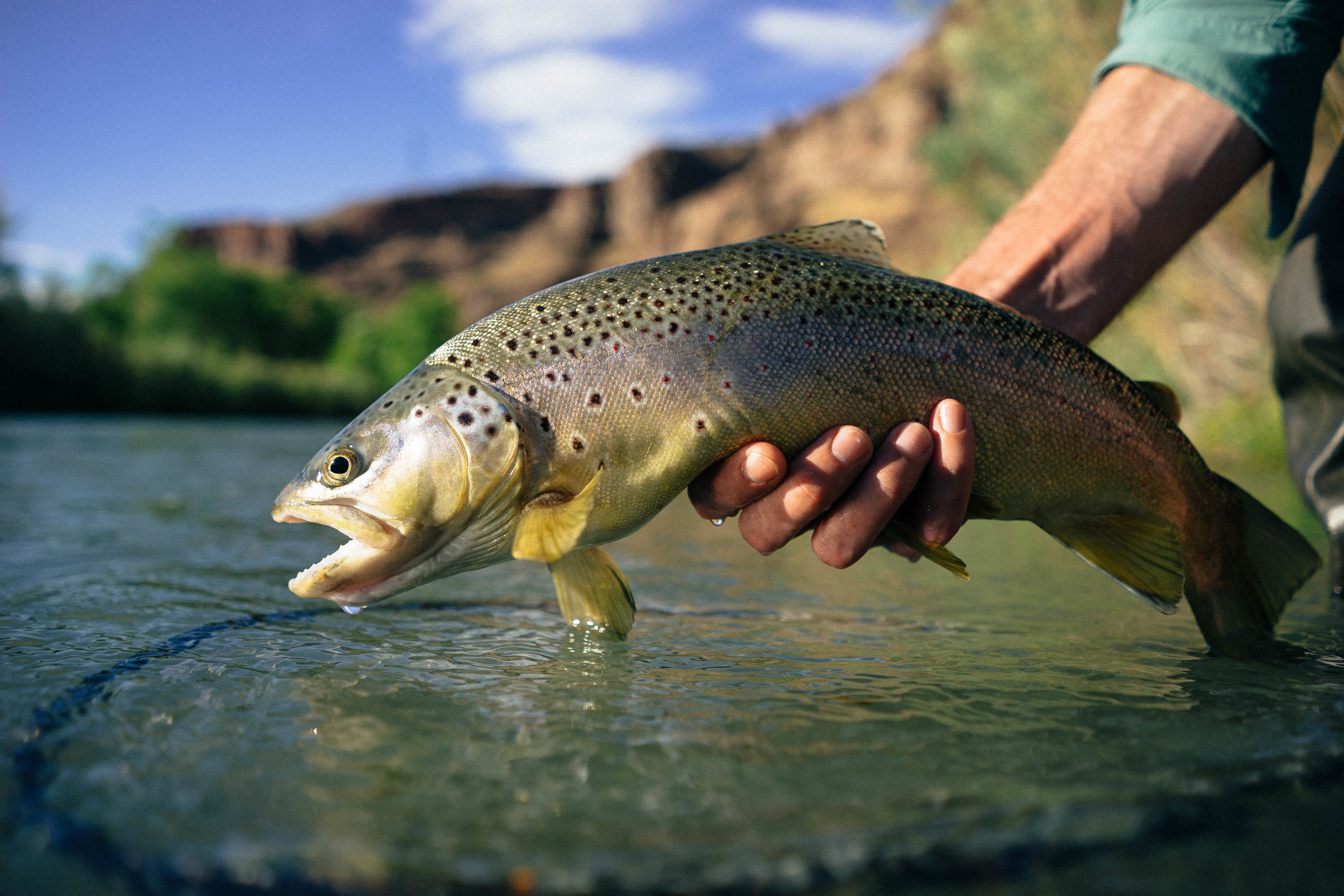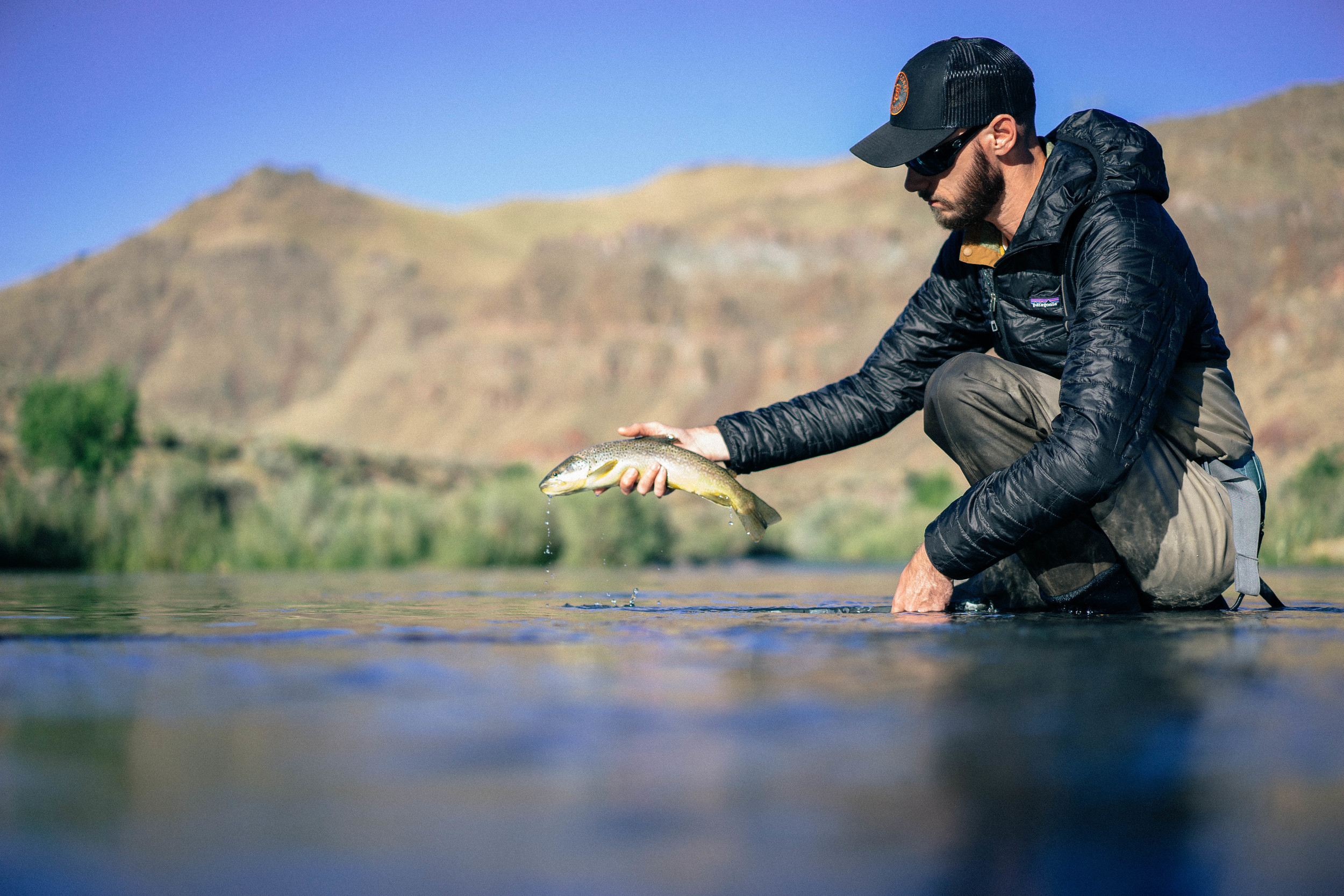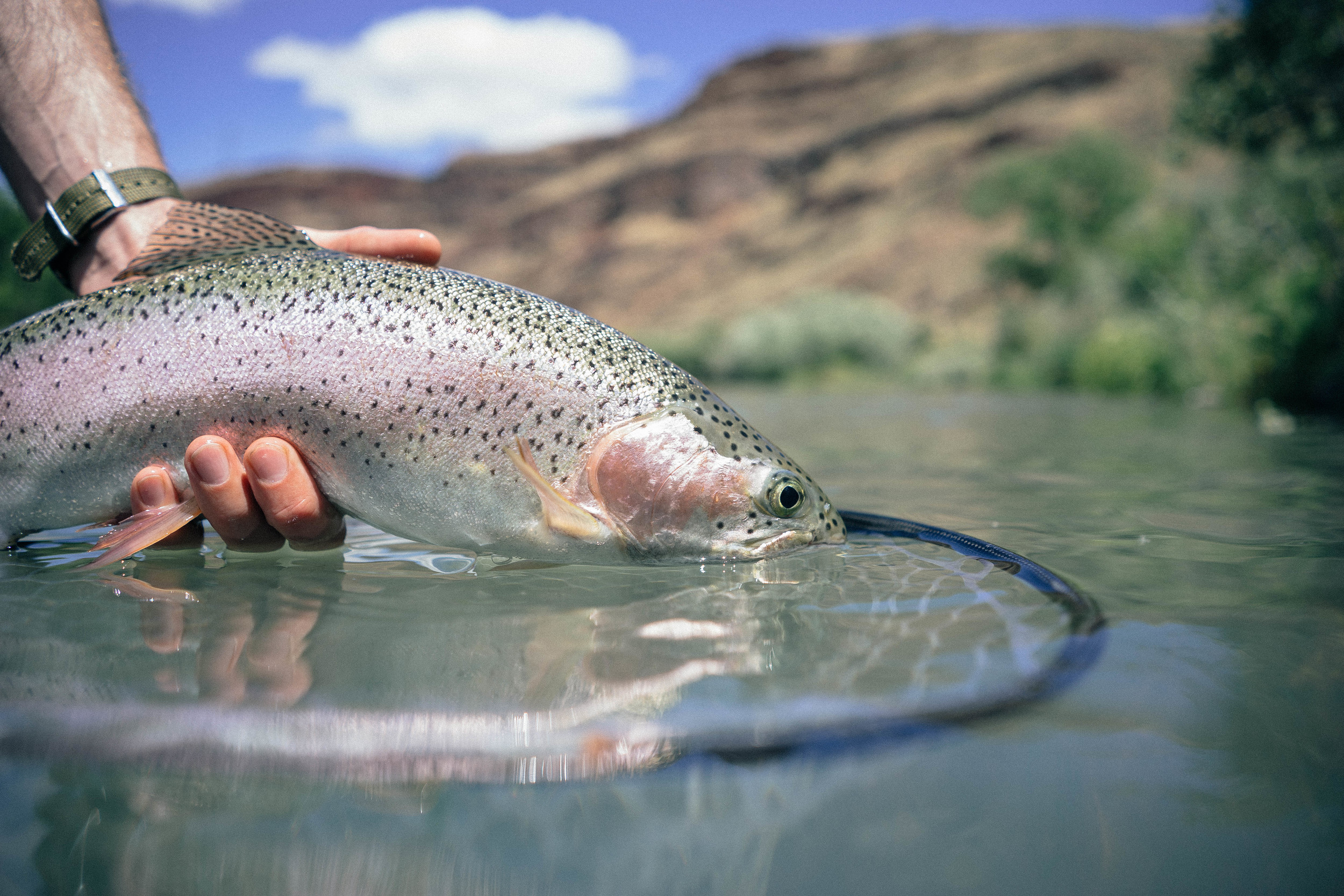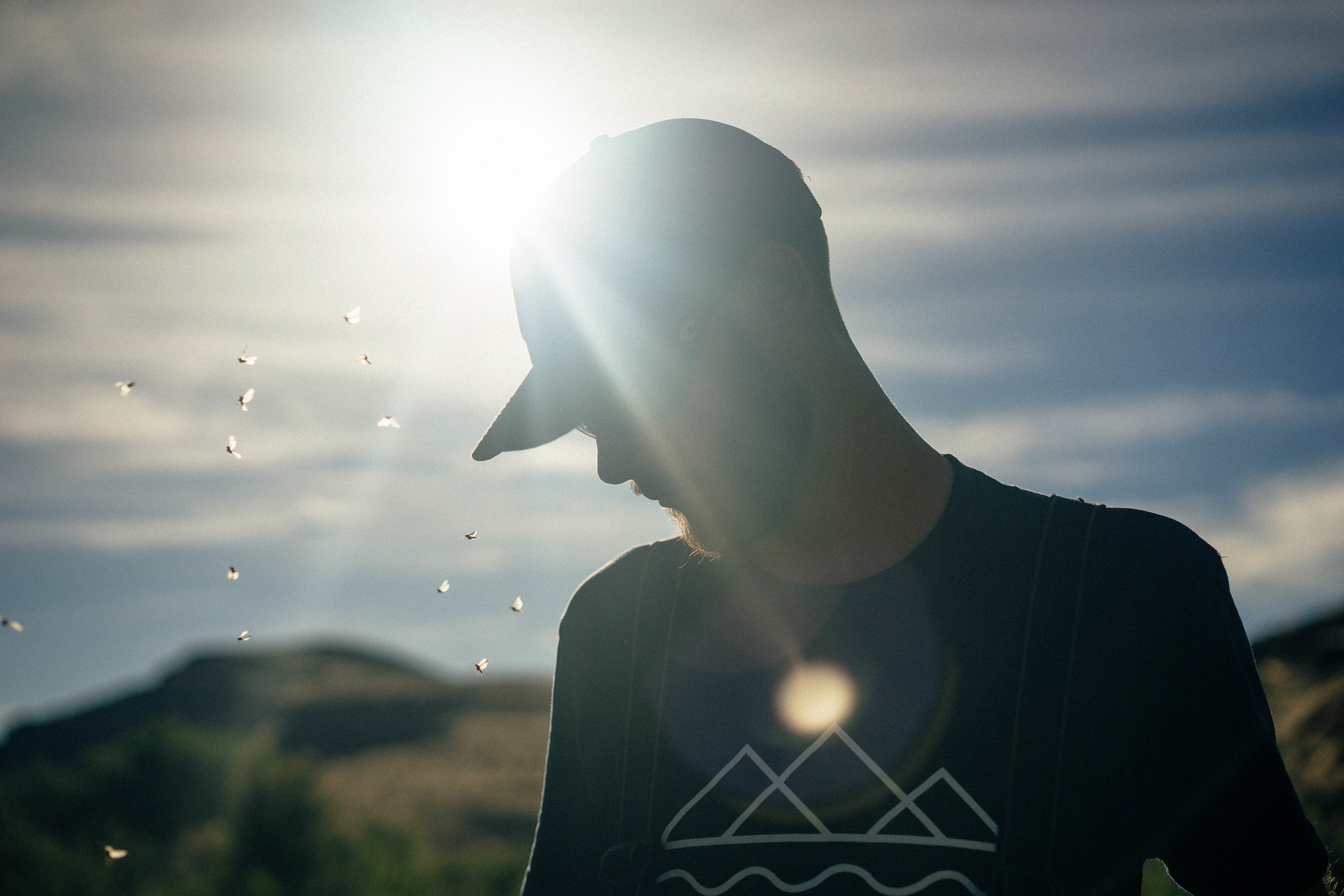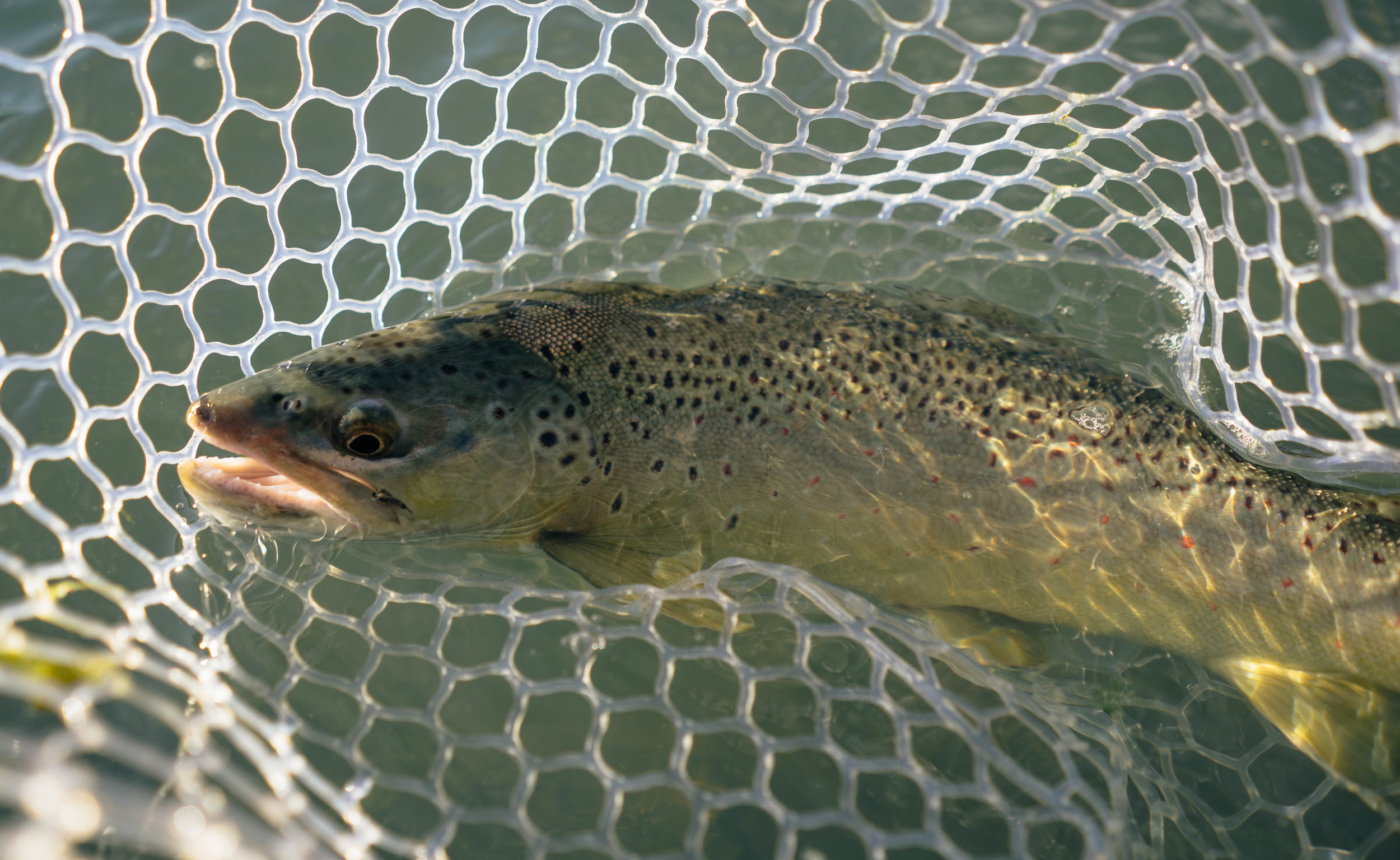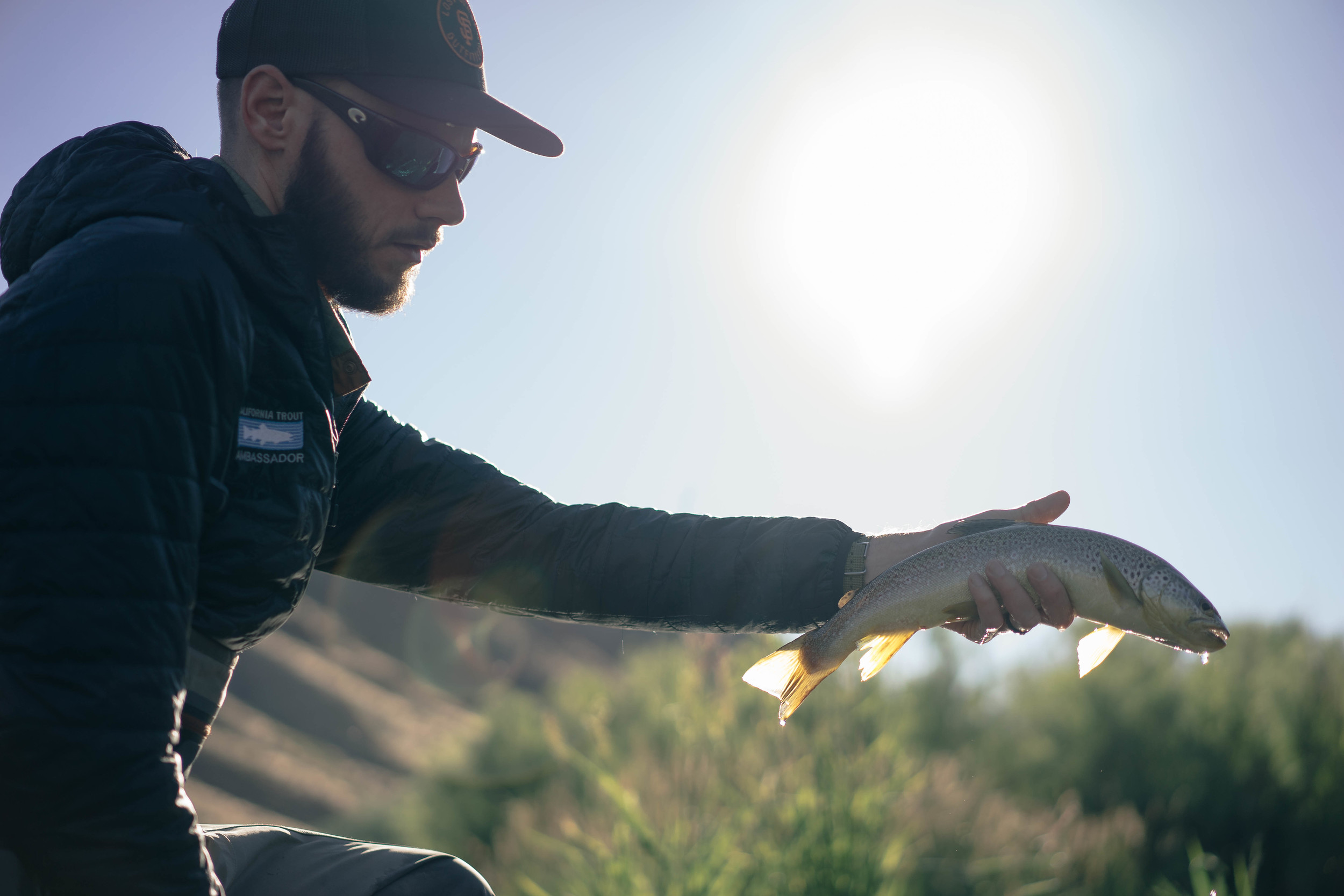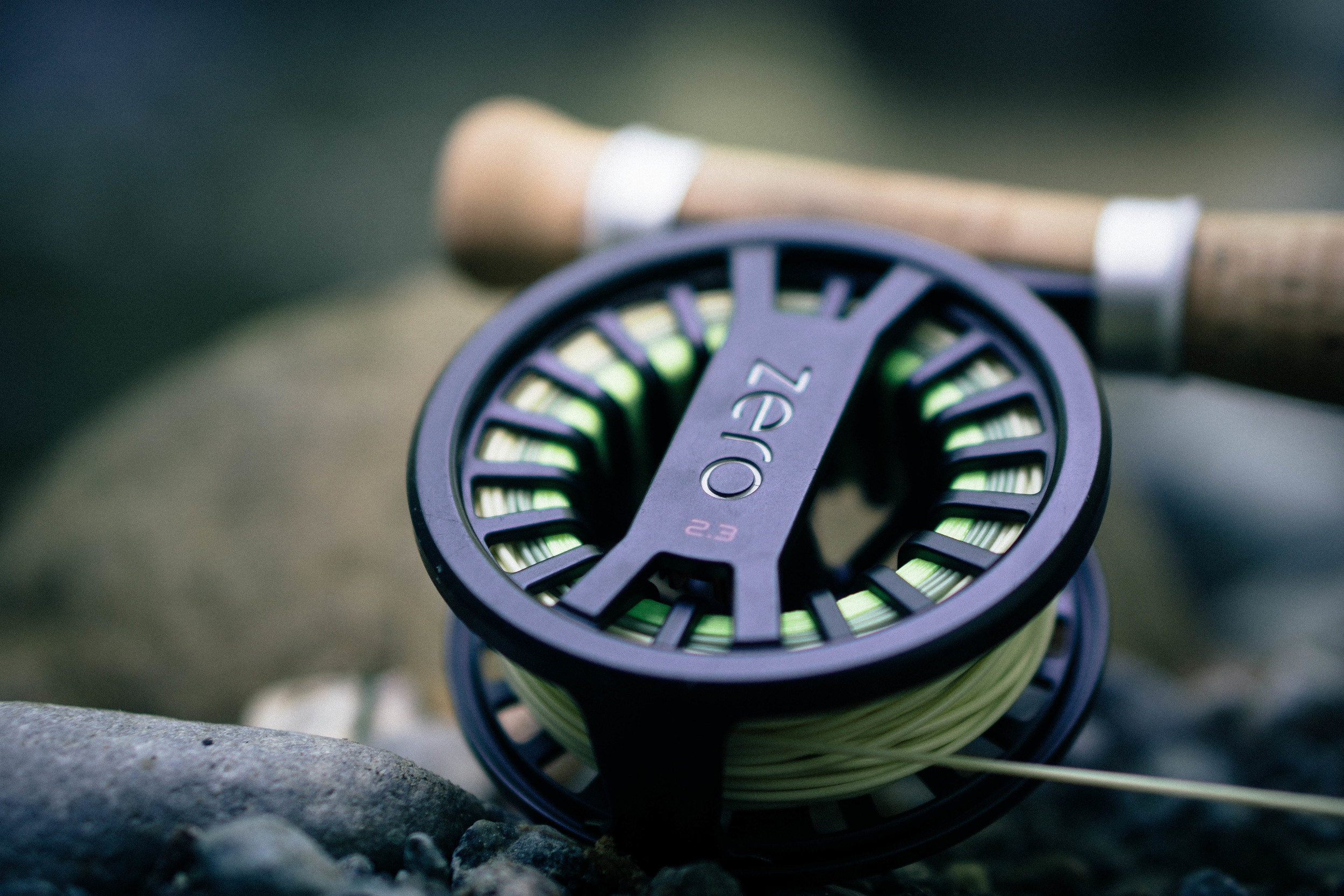With one of the biggest storms in recent memory pounding the whole of Northern California, most of our rivers were running high and dirty. That's not a good situation to be in when you have an itch only a trout can scratch. After a some back and forth, Aaron and I decided to head east, over the snow-covered peaks of the Sierra Nevada to find fish willing to chase a fly.
After a long icy drive, we parked stream-side and piled layers of flannel, nano-puff, and cotton under our waders to keep us warm in the single-digit morning temperatures. The night before we had connected with a few locals (Jim Stimson and Sam Vasily) who we were going to join us over the next two days. Neither Aaron or I had met these guys but we'd both been following their fishing exploits through Instagram for awhile. It was clear to us that they were both fishy guys and had pinned some serious fish, but you never know what you're getting into when you decide to spend a day on the river with someone you've never met. Were they going to be down to earth? Arrogant? Easy to talk to? Who knew, only time would tell.
Just as we clipped our waders in and finished tightening our knots, Jim rolled up in is truck. He hopped out of the cab with an easy smile and the energy of someone half his age. After pleasantries, we trudged through the knee deep snow on our way to likely holding water. Before we made it to the river, it was clear Jim was going to be a great guy to spend a day hunting big fish with. He was personable, funny, and had a deep knowledge of fly fishing and photography, two of my passions. The three of us fished through the day and landed a number of good bows. Nothing to write home about but solid fish to ease the discomfort of numb toes.
We called it a day with cold beverages under and even colder sunset in one of the most stunning places I've fished. A perfect closure to a day well spent.
That night was early though. The effort of grinding it out in the snow along with the long drive had sapped every last bit of energy Aaron and I had.
We woke up early to catch the Sunday morning sunrise and a text from Sam was already lighting up my phone. "What time are you guys planning on heading down to the river?" Really Sam? It's negative 15 degrees out there and you're chomping at the bit to clear ice from your guides already? Truth be told, Aaron and I weren't much less enthusiastic. With a few sunrise photos under our belt, we met Sam at the river and were headed down the same snowy road towards some solid fish tucked under a blanket of snow.
Sam was fishy, real fishy. The second the temperature warmed up and the bugs started moving, he was tight to his first fish of the day. With only a few hours to fish before heading to work for the day, we made our way through the most worthwhile holes. Sure enough, Sam was bent deep into the butt of his rod and running down stream.
Before Aaron and I could make our way through the snow, he'd come un-buttoned but was quickly back into another fish. Once to net, it measured right at 22 inches.
Soon after releasing that fish, we could see Jim working up river. The four of us fished util the early afternoon before calling it a day. Two days filled with fish, new friendships, laughs, and lots of learning from the local boys had Aaron an I riding high.
As per usual, we were up early Monday morning for our trip back home. Always reluctant to re-join the hustle and bustle of city life, we drug our feet up highway 395 and stopped for a little more fishing before aligning our bumpers with the throngs of families coming off the mountains. The long trip back to San Francisco gave us plenty of time to reflect on the weekend and plan for our next foray into the wild.
































